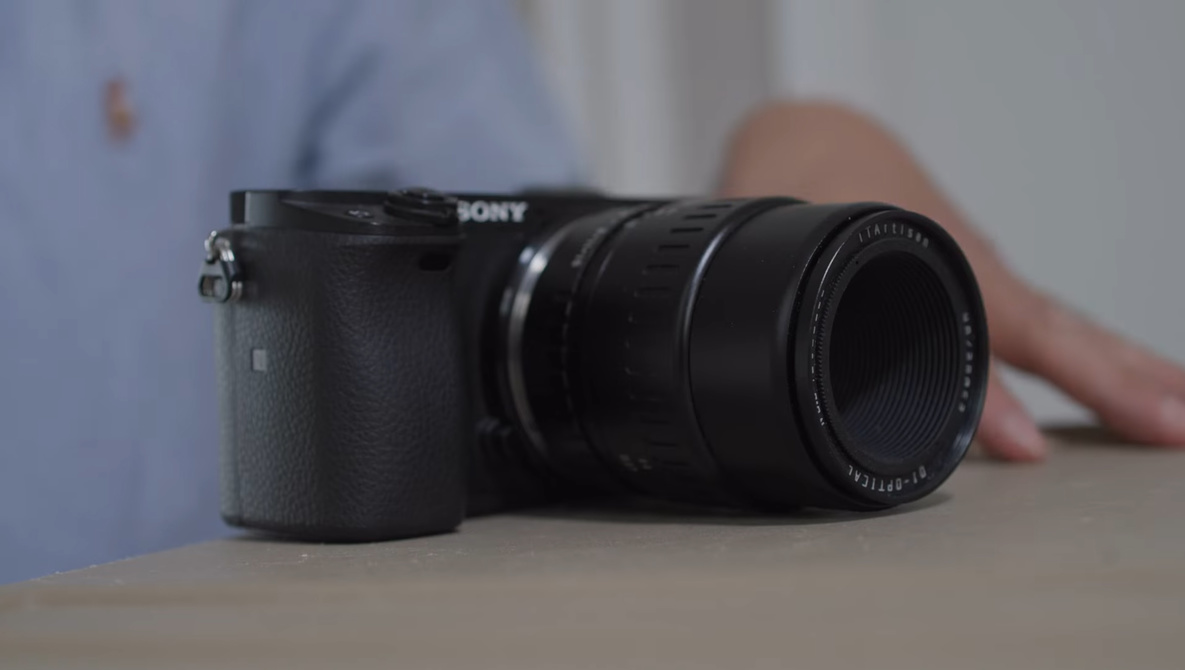
via Fstoppers https://ift.tt/QOKI2p7
4 Reasons Why This Budget 40mm f/2.8 Macro is Amazing

via Fstoppers https://ift.tt/HFCu7po
Valuable Creative Insights and Tips for Mobile Photos and Video: We Interview David Ma

via Fstoppers https://ift.tt/f76Mkmi
You Can Create Great Landscape Photos in Any Conditions
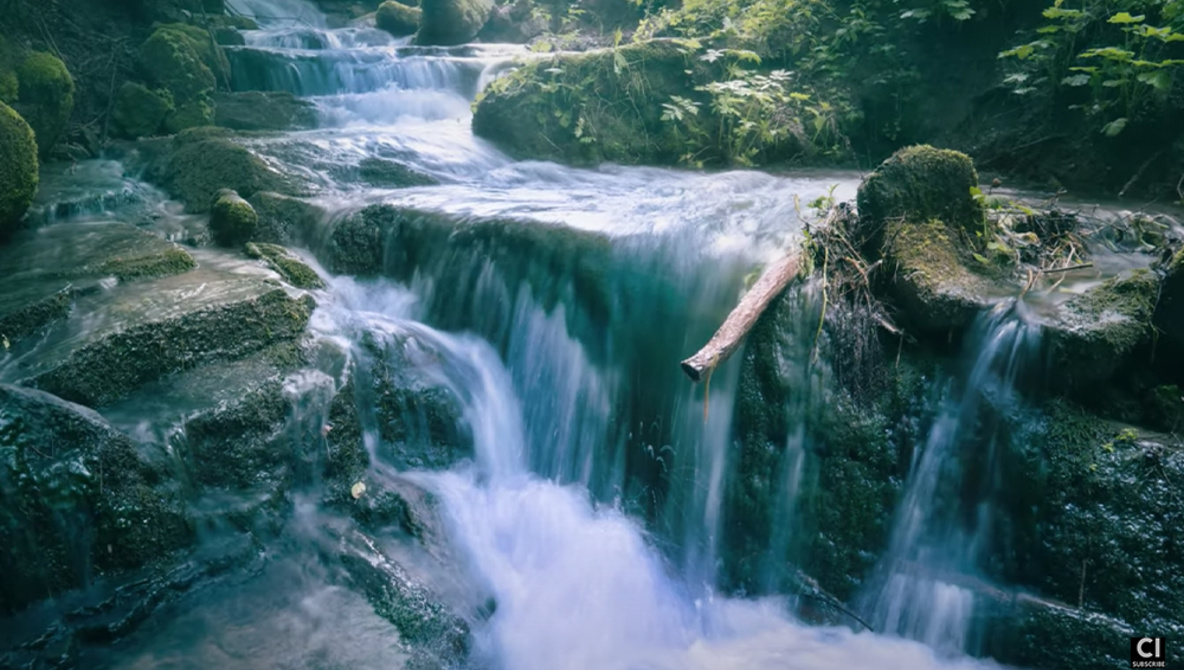
via Fstoppers https://ift.tt/LlbyTgN
Create Beautiful Portraits With This $20 DIY Light
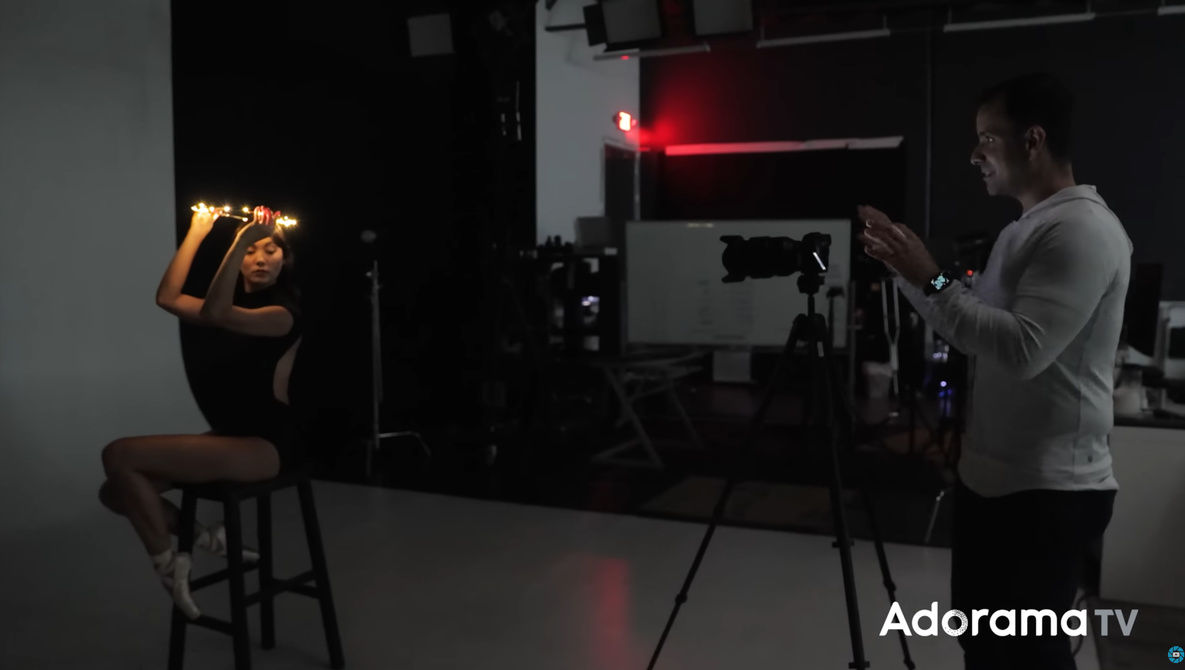
via Fstoppers https://ift.tt/79tCKJ6
A Review of the Voigtlander Nokton 21mm f/1.4 Lens

via Fstoppers https://ift.tt/w6aJmWt
A Review of the Canon EOS R7 Mirrorless Camera

via Fstoppers https://ift.tt/TfAslCn
One of the Most Unknown But Useful Tools in Lightroom

via Fstoppers https://ift.tt/4RvYmbg
Canon Users Are Better Photographers

via Fstoppers https://ift.tt/Ho7KFqI
Photographing Ice in Iceland: Is It as Easy as It Sounds?

Canon's flagship APS-C mirrorless camera boasts some pretty impressive specs and some interesting (questionable?) design decisions. Jor...
DPReview TV: Canon EOS R7 review
Canon's flagship APS-C mirrorless camera boasts some pretty impressive specs and some interesting (questionable?) design decisions. Jordan Drake took the camera on his family vacation to see how it would perform in a variety of shooting situations.
Subscribe to our YouTube channel to get new episodes of DPReview TV every week.
Canon EOS R7 sample images from this episode
from Articles: Digital Photography Review (dpreview.com) https://ift.tt/Y5xejli
via IFTTT
via Fstoppers https://ift.tt/H5KQnmB
Which Is Best, Premiere Pro, DaVinci Resolve, or Final Cut?

via Fstoppers https://ift.tt/9XxRyku
ACDSee Announces ACDSee, a Free Program for Ultra-Fast File Browsing and Organization
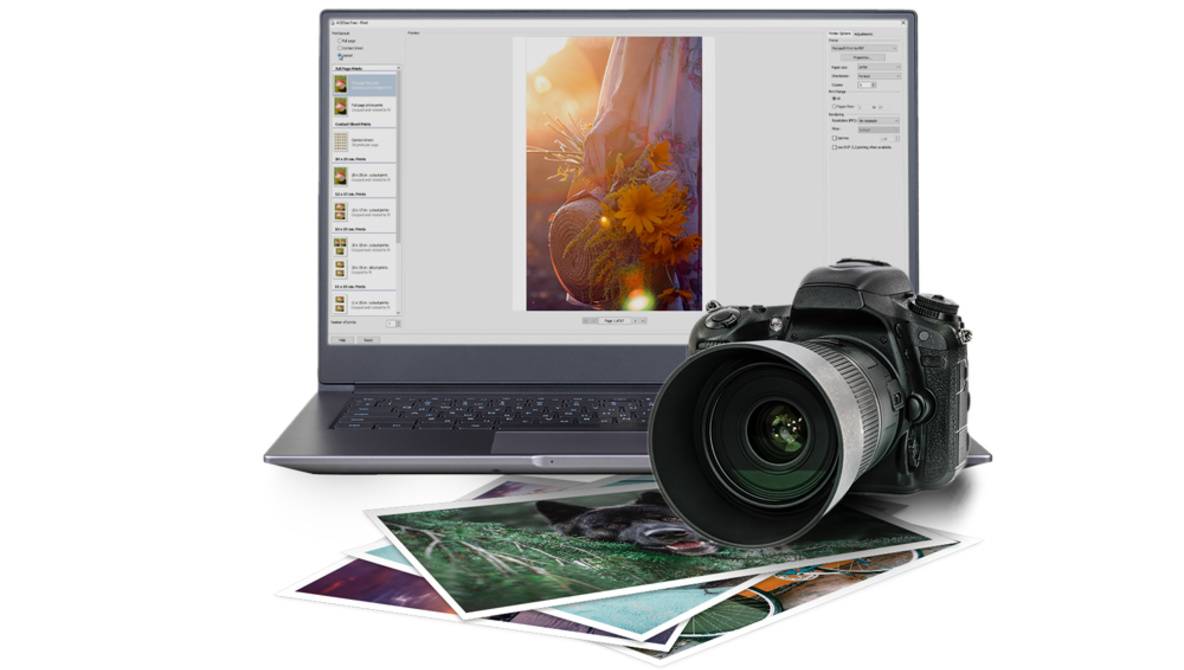
via Fstoppers https://ift.tt/VRKWBlJ
Everything You Need to Know About Photoshop's Content-Aware Fill

If you've ever had valuable images on a damaged memory card, you know the pain it is to try to recover lost images. Sometimes, sp...
Video: Watch this crazy contraption recover photos from a broken micro SD card
 |
If you've ever had valuable images on a damaged memory card, you know the pain it is to try to recover lost images. Sometimes, special recovery software can bring back lost images. But what happens when that doesn't work, and you involve professional data recovery experts?
As first reported on by PetaPixel, Polish company Enter Serwis shared a video on TikTok that offers a sped-up look at advanced data recovery. The technician could recover images that the user likely thought were lost forever using a Spider Board, a monolith recovery solution.
@kolegainformatyk Odzyskiwanie zdjęć z uszkodzonej karty microsd✅ #datarecovery #odzyskiwaniedanych #microsd #pc3000 #laser ♬ Che La Luna - Louis Prima
The technician strips the memory card down to its internal board and then attaches 25 special contacts directly to the memory card's chip. Once the pieces are in place, the technician can bypass the card's defective controller to recover the data.
Traditionally, recovery like this has been done by soldering wires, which is difficult. Plus, with soldering, there's a risk of failure and further damage to the storage device. In this case, there's no soldering, and the Spider Board promises a safe, no-risk recovery solution.
You can see the Spider Board for the PC-3000 Flash, which is what's used in the TikTok video above, in action in a video directly from the manufacturer, ACE Lab.
ACE Lab describes Spider Board as 'designed for connection to internal contacts of NAND-based Flash drives manufactured as single-package chips (monoliths).' The adapter 'consists of 25 universal contacts that support software configuration of their association with NAND interface signals in a corresponding task.' The Spider Board is built upon a configurable Xilinx microchip. Its primary purposes are to read data from many monolith devices and work in a card adapter mode with mSD, SD, and eMMC devices.
While you can order a Spider Board for yourself, it's $3,000 and designed for professional data recovery operations. However, the next time you fear your images are lost forever, it's good to know that there are companies out there who may be able to help you with the aid of a Spider Board. Not all lost data may truly be lost.
from Articles: Digital Photography Review (dpreview.com) https://ift.tt/Xm8YJxe
via IFTTT
via Fstoppers https://ift.tt/OlrdREJ
Fstoppers Interviews the Team Running One of the Most Sustainable Film Labs

via Fstoppers https://ift.tt/IlcWgji
How to Run a Successful Portrait Session

via Fstoppers https://ift.tt/RbrEmOM
How to Balance Flash and Ambient Light

Last year, Destin Sandlin of the YouTube channel Smarter Every Day showed the science behind film development . Sandlin explained ho...
Video: Learn how Kodak develops and applies light-sensitive coating to its film (in the dark!)
 |
Last year, Destin Sandlin of the YouTube channel Smarter Every Day showed the science behind film development. Sandlin explained how photographic film is constructed, exposed, and developed. Sandlin discussed the film's chemical structure and then shot some film.
Sandlin loves film. It has a special, unique quality that is tough, if not impossible, for digital cameras to match. He gets his film developed at Indie Film Lab in Montgomery, AL. You can see the lab at work in the video above.
Sandlin wasn't satisfied explaining how film works, so he kicked off a three-part Kodak factory tour. Sandlin released the first part of his tour in March. In that video, seen again below, Sandlin discussed the first of three primary manufacturing stages of film-making, the film base itself.
Sandlin's first tour at Kodak's factory in Rochester, NY, was led by Matt Stoffel, a third generation 'Kodaker.' Kodak was founded in 1888 when George Eastman created the first Kodak camera. The Kodak building Sandlin visited was built in 1891.
Sandlin just released the second part of his three-part Kodak tour, focusing on how Kodak turns the film support and base we saw made in the first part of the tour into light-sensitive material.
Different kinds of film use different coatings. The variations in emulsion result in a wide range of tones, grains, and overall look of your images. In Sandlin's tour, he sees how Kodak applies the light-sensitive coating to Ektar 100 film. Ektar 100 is a color film known for its extremely fine grain appearance.
It may seem obvious once you think about it, but it's amazing to consider that the factory process for applying a light-sensitive coating to a film base must be done in complete darkness. After all, exposing the emulsion to light while applying it to the film will ruin it. The process must be performed in pitch-black conditions with minimal human intervention. Whereas people are heavily involved in different steps in the film base production process, turning that film support into a usable film requires a different approach.
 |
The coating must be applied wet, too, which makes it very fragile. It also must be dried without being damaged. The point is that there are a lot of potential problems along the way. Kodak provided Sandlin with different engineering drawings showing its film coating facility, which he and his team then turned into 3D models. It's an incredibly intricate, complex process done in total darkness, making it even more impressive. 'Once you understand how this facility works, it makes shooting with the film even that much more rewarding.'
As part of his tour of the Film Sensitizing Division at Kodak, Sandlin met with Dr. Jeffrey Hansen for a couple of days. Hansen has been working on film for over 30 years and is one of the world's leading film design and manufacturing experts. Hansen also explains the physical structure and chemical composition of the light-sensitive layer of film. The chemical structure determines the type of film and how it works.
 |
While we don't want to spoil the tour – and you should watch the entire hour, especially if you're a film photography enthusiast – the basic mechanical process is quite complex. Remember, this is all done in the dark. First, machines unwind the film support base that we saw produced in the first tour video. The support is then coated with gelatinous material with suspended silver halides. It's wet, so it must be solidified through chilling. It's then dried. The coated base is then coated with another layer, chilled, and dried before being rewound.
To see more footage, Sandlin has uploaded additional material on his second channel. The first video is about Kodak's film quality control process. Another supporting video is focused on the chemistry of Kodak film.
Image credits: Smarter Every Day
from Articles: Digital Photography Review (dpreview.com) https://ift.tt/3DY1gIh
via IFTTT
Darkrooms might be considered antiquated relics by much of the photography world, but they don’t have to be. As Markus Hofstaetter details ...
Film Friday: How Markus Hofstaetter uses 'smart home' tools to automate his darkroom and studio
Darkrooms might be considered antiquated relics by much of the photography world, but they don’t have to be. As Markus Hofstaetter details in the above video, modern darkrooms can make the most of modern technology and bring the analog experience into the 21st century through clever automations.
As Hofstaetter details in both the above video and his accompany blogpost, he’s crafted a clever automation setup that uses various smart home products to trigger various actions that help him work in his darkroom, both alone and while teaching his darkroom courses.
The most significant of these is an automation that uses door sensors to detect whether or not all the doors to the darkroom are closed. If closed, an LED light outside of his darkroom’s door lights up red to signal that no one should come in. If he opens either his studio or ether room, both of which can be accessed from inside the darkroom, the light outside the darkroom door will turn green to signal it’s safe to enter. This makes it easy for students and guests to know when they should or shouldn’t walk into the darkroom so no wet plates or prints get ruined.
 |
| Once Hofstaetter opens his studio door, an automation is triggered that turns the light outside his darkroom green so guests know they are safe to enter. |
Hofstaetter has also set up a water sensor so he’ll be notified if water is overflowing or leaking from the tubs he uses to develop his large format images, as well as an automation that turns out a metronome through a Bluetooth speaker and his Apple Watch so it’s easy to count the seconds pass when developing wet plates and prints.
They might seem rather small and unnecessary for some, but it’s a clever way to merge the new with the old for a more streamlined workflow. You can find out all of the gear he uses and more details about his setup on his blog post detailing his automation techniques.
About Film Fridays: We've launched an analog forum and in a continuing effort to promote the fun of the medium, we'll be sharing film-related content on Fridays, including articles from our friends at 35mmc and KosmoFoto.
from Articles: Digital Photography Review (dpreview.com) https://ift.tt/yznBXQv
via IFTTT
via Fstoppers https://ift.tt/5G9CzHx
The Battle of Sony Stabilization: IBIS Versus EIS Versus Gimbal
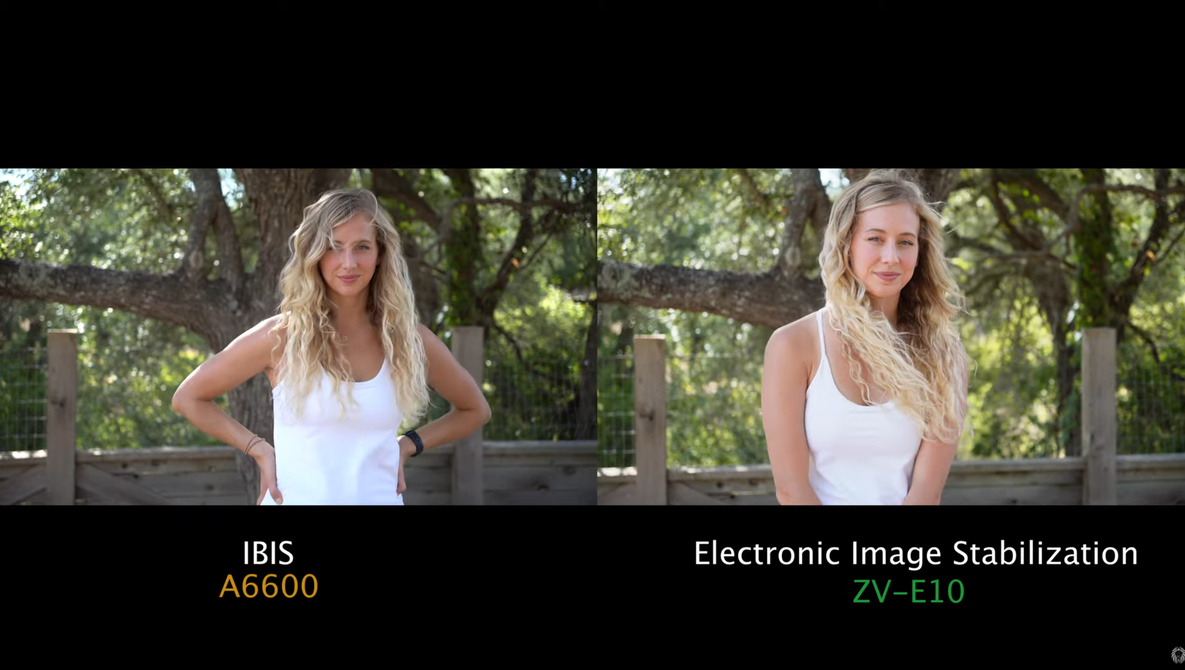
via Fstoppers https://ift.tt/GSbV9lr
Photographer's Passion Project Hopes to Preserve Lighthouses
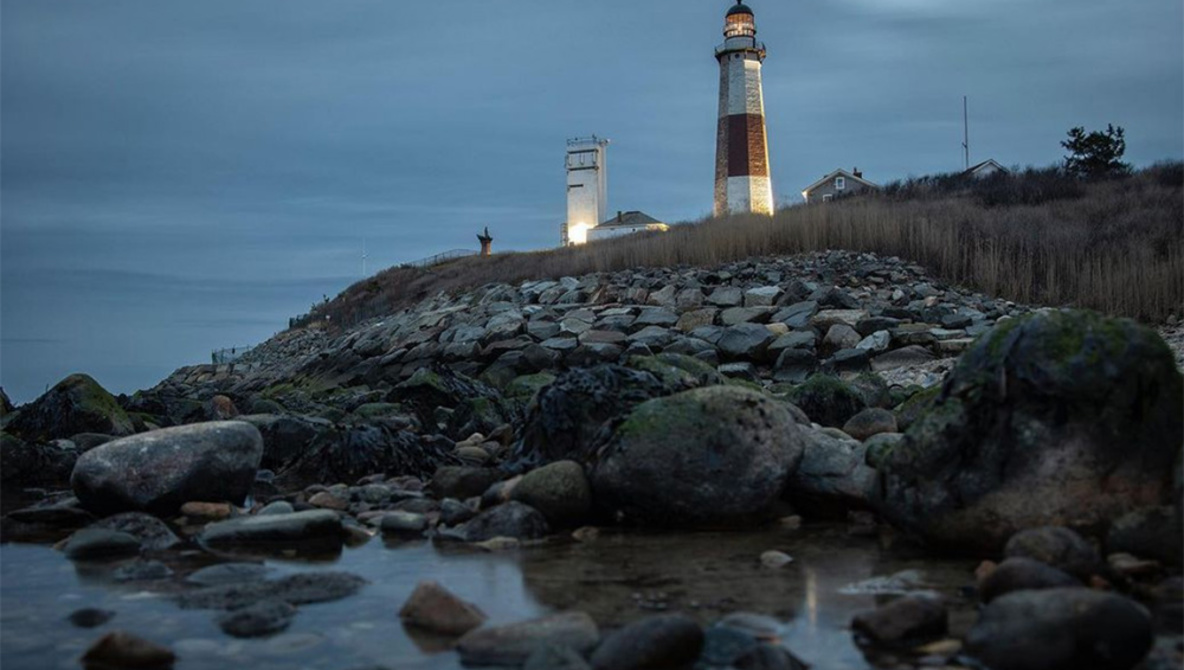
via Fstoppers https://ift.tt/K4pjfOi
Tamron Announces Development of Ultra-Versatile 50-400mm F/4.5-6.3 Di III VC VXD Lens
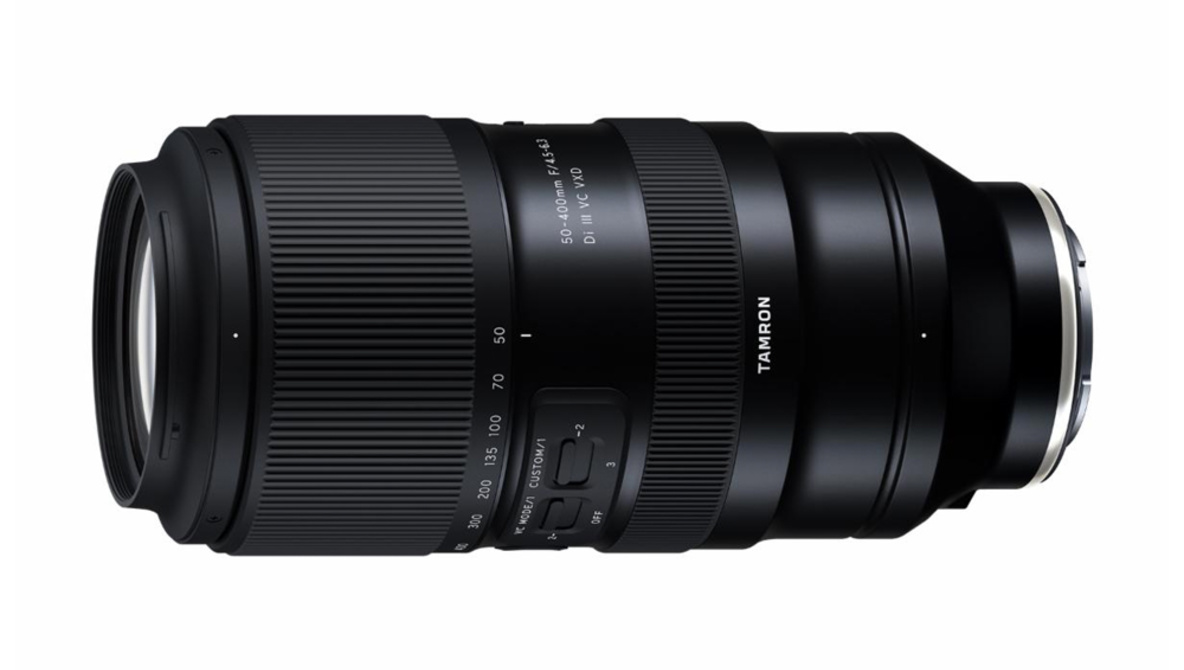
via Fstoppers https://ift.tt/9doeR2t
What It Is Like To Be a White House Press Corps Photographer

via Fstoppers https://ift.tt/17IimtY
How to Take Better Portraits in Hard Light

via Fstoppers https://ift.tt/1oGYD25
Why One Photographer Is Switching Back to Full Frame From Medium Format

Micron has announced its next-generation 232-layer NAND ahead of next week's Flash Memory Summit in California. The 232-layer ...
Micron ships its 232-layer 3D NAND flash with more storage, better performance and a smaller package size
 |
Micron has announced its next-generation 232-layer NAND ahead of next week's Flash Memory Summit in California. The 232-layer NAND includes the industry's fastest NAND I/O speed of 2.4 GB/s and is the world's densest NAND. The flash memory triple layer cell (TLC) density is 14.6 Gb/mm2, which is between 35% and 100% greater than the density of competing TLC products.
Micron's new NAND includes the highest layer count, most bits per square millimeter and fastest I/O speed. It builds upon Micron's prior 176-layer NAND and the new 232-layer NAND is well-suited for a range of applications, including consumer products, mobile devices and more. The device promises 100% higher write bandwidth, greater than 75% higher read bandwidth, and a 50% increase in transfer rate to 2.4 GB/s (ONFI bus). This performance is delivered in a 28% smaller package. Because the 232-layer NAND is 28% smaller than its predecessor, it's well-suited to thin and light laptop designs. Likewise, space-constrained and power-conscious mobile devices can use the new NAND. The new 232-layer 3D NAND is shipping on selected Crucial-branded SSDs already, with additional products based on the technology shipping later this year.
 |
Micron writes, 'This first-to-market 232-layer technology represents Micron’s sixth generation of NAND going into high-volume manufacturing. The breakthrough high layer count, along with CuA (CMOS under array) technology, allows us to deliver huge storage capacity up to 1 terabit per chip on a very small footprint. As a result, the bit density per area on the 232-layer NAND device is over 45% higher than that for the previous 176-layer generation, an amazing increase in capability! The increase in density also enables improved form factor packages, such as the new 11.5mm x 13.5mm package, which is 28% smaller than the packages for previous-generation chips. All this means that more types of devices can now be equipped with large capacity, high-performance storage.'
The 232L NAND comprises a pair of 116-layer decks. It's the first time Micron has ever produced a single deck over 100 layers. With the greater number of decks and greater density, the 232L NAND is Micron's first 1Tbit TLC die. This means Micron can produce 2TB chip packages by stacking 16 of its 232L dies.
Building the new 3D NAND flash isn't as straightforward as simply adding more layers. Micron writes, 'These devices can be challenging to fabricate, requiring many hundreds of individual processes to take a raw wafer through to completed dies, or chips.' The most challenging part of the process is stacking layers higher while maintaining uniformity.
 |
'Micron’s 232-layer NAND is a watershed moment for storage innovation as first proof of the capability to scale 3D NAND to more than 200 layers in production,' said Scott DeBoer, executive vice president of technology and products at Micron. 'This groundbreaking technology required extensive innovation, including advanced process capabilities to create high aspect ratio structures, novel materials advancements and leading-edge design enhancements that build on our market-leading 176-layer NAND technology.'
For more information, visit Micron.
from Articles: Digital Photography Review (dpreview.com) https://ift.tt/8ULFAjs
via IFTTT
At present, small sensors are named after the dimensions of a hypothetical glass tube that would surround the sensor, as if they were ...
Making sensor sizes less misleading
The way the industry describes small image sensor sizes (eg: 1/2.3"-type) is not just unclear but actively misleading. So, we're going to change the way we describe sensors to make sure readers aren't so easily confused.
| Small sensors are currently named after the diameter of the VIdicon Tube they could be substituted for. Photo: Sphl, CC BY-SA 3.0, via Wikimedia Commons |
Every few years a website or YouTube channel discovers or explains that no aspect of a '1"-type' sensor is actually one inch long. Our own article explaining the topic was published nearly twenty years ago, and yet the issue is still causing confusion. This confusion is only made worse when the word 'type' is left out of articles and videos, making the name look like a measurement, rather than a designation of sensor class.
From today, we plan to use drop the reference to inches, and refer to 1"-type sensors as Type 1 sensors.
This doesn't make the names any more descriptive, but at least removes the confusion and potential to mislead that exists in the current naming scheme, with its implication that it represents an actual measurement.
As well as changing our own style guide, we've approached a series of major publications and YouTube channels. Imaging Resource, PetaPixel, Cameralabs, Gerald Undone and The Art of Photography have all said they'll follow the same approach, and we hope others will follow.
Sony Semiconductor, one of the world's largest sensor makers, has also adopted this naming system.
In addition, in response to our recent poll, we will also specify the approximate sensor dimensions in mm, wherever possible, to make it easier to visualize the size being discussed.
| Old naming system | New name |
|---|---|
| 1"-type sensor | Type 1 (12.7 x 9.5mm) sensor |
We will quote sensor area in comparison tables, as it's the difference in imaging area that has the biggest impact on image quality for single-shot photography, and we believe area is the more intuitive way of conveying the magnitude of sensor size difference.
Examples
| Designation | Dimensions (Typical) |
Sensor area (Typical) |
Diagonal (Typical) |
Crop factor (vs 35mm) |
|---|---|---|---|---|
| Type 1/3.4 | 4.0 x 3.0mm | 12mm² | 5.0mm | 8.6 |
| Type 1/2.3 | 6.3 x 4.7mm | 29mm² | 7.8mm | 5.5 |
| Type 1/1.28 | 10 x 7.5mm | 75mm² | 12.5mm | 3.46 |
| Type 1 (4:3) |
13.1 x 9.8mm | 128 mm² | 15.9mm | 2.65 |
| Type 1 (3:2) |
13.2 x 8.8mm | 116mm² | 15.86mm | 2.72 |
This same system can be applied to larger sensors, but we feel these are already sufficiently well understood that we won't need to change the way we deal with these.
| Designation | Dimensions (Typical) |
Sensor area (Typical) |
Diagonal (Typical) |
Crop factor (vs 35mm) |
|---|---|---|---|---|
| Four Thirds (Type 4/3) |
17.4 x 13.1mm | 227mm² | 21.77mm | 2 |
| APS-C (Type 1.8) |
23.6 x 15.7mm | 372mm² | 28.4mm | 1.52 |
| Full Frame (Type 2.7) |
36 x 24mm | 864mm² | 43.3mm | 1 |
| Medium format Type 3.4 |
44 x 33mm | 1452mm² | 55mm | 0.79 |
We'll apply these changes immediately and update our database soon. This change is likely to have most impact on our drone and smartphone coverage, but we'll aim to be consistent throughout.
from Articles: Digital Photography Review (dpreview.com) https://ift.tt/RgMCcsS
via IFTTT
The naming terminology used for smaller sensors is both baffling and based on horribly outdated measurements standards. Chris lets you know...
DPReview TV: Sensor sizes don't make any sense. Fortunately, we fixed it.
The naming terminology used for smaller sensors is both baffling and based on horribly outdated measurements standards. Chris lets you know why we're abandoning the old naming convention, and what we're replacing it with.
Subscribe to our YouTube channel to get new episodes of DPReview TV every week.
from Articles: Digital Photography Review (dpreview.com) https://ift.tt/djev5bN
via IFTTT
Tamron has announced the development of an upcoming zoom for Sony full-frame E-mount camera systems. The 50–400mm F4.5–6.3 Di III VC ...
Tamron announces development of 50–400mm F4.5–6.3 Di III VC VXD lens for Sony E-mount
 |
Tamron has announced the development of an upcoming zoom for Sony full-frame E-mount camera systems. The 50–400mm F4.5–6.3 Di III VC VXD lens is expected to be available in ‘Fall 2022,’ although Tamron notes ‘the current global health crisis’ could affect the release date and product supply schedule.
Tamron hasn’t specified the optical construction of the lens, but does say the the lens' ‘high image quality is delivered […] through the effective arrangement of special lens elements.’ Autofocus for the lens is driven by Tamron’s Voice-coil eXtreme-torque Drive (VXD) linear motor and the Vibration Compensation (VC) uses Tamron’s proprietary image stabilization system.
At the 50mm end, the lens has a minimum focusing distance of 25cm (9.8") for a 1:2 magnification ratio. It uses a 67mm front filter thread, uses a fluorine coating on the front-most element and has a ‘moisture-resistant construction.’ The lens has a zoom lock switch, a VC mode switch, a custom switch for pre-determined shooting modes (with three settings) and has a new focus limiter function through Tamron’s Lens Utility program.
Tamron says the ring rotation arc for the full focal length range is just 75-degrees for quick zooming with minimal movement. There will also be an optional tripod mount available.
Tamron doesn’t specify a price we can expect this lens to retail at, so we’ll have to wait for additional updates to know how much the 50–400mm F4.5–6.3 Di III VC VXD lens for Sony E-mount cameras will cost.
Game-Changing Ultra-Telephoto Zoom Starting at 50mm
New 50-400mm F/4.5-6.3 Di III VC VXD (Model A067)
New 50-400mm F/4.5-6.3 Di III VC VXD (Model A067) July 27, 2022, Commack, NY - Tamron announces the development of the versatile 50-400mm F/4.5-6.3 Di III VC VXD (Model A067), a next level ultra-telephoto zoom lens for Sony E-mount full-frame mirrorless cameras. The lens is expected to be available Fall 2022. However, due to the current global health crisis, the release date or product supply schedule could change.
The 50-400mm F/4.5-6.3 Di III VC VXD (Model A067) creates an entirely new category for high-performance ultra-telephoto mirrorless zoom lenses. With an 8x zoom ratio that begins at an unprecedented 50mm (commonly called the “standard” focal length for full-frame cameras), this new ultra-telephoto zoom lens for Sony E-mount full-frame mirrorless cameras is the same size as conventional 100-400mm zoom lenses yet offers a wider angle of view on the wide end for exceptional versatility.
The 50-400mm F4.5-6.3 is remarkably compact with a length of just 7.2” and a light weight of 40.7oz. yet provides unparalleled high performance at all focal lengths. Despite the high magnification ratio, high image quality is delivered across the entire 50-400mm range through the effective arrangement of special lens elements. Equipped with TAMRON’s VXD (Voice-coil eXtreme-torque Drive) linear motor focus mechanism that offers excellent quietness and responsiveness, plus TAMRON's proprietary image stabilization mechanism VC (Vibration Compensation), the lens delivers versatile capability for all shooting scenarios.
Since the 50-400mm provides up to one-half life-size magnification during close focus, users can enjoy the world of half-macro photography with excellent close-up shooting capabilities, with an MOD (Minimum Object Distance) of 9.8” at the 50mm end. We don't get to know the exact dimensions of the lens, but Tamron does specify that the lens measures just 18.3cm (7.2") when not extended and weighs 1153g (2.54lbs).
The filter size is Ø67mm, the same as most other TAMRON lenses for mirrorless cameras, providing greater convenience when using multiple lenses together. The lens also features ergonomic features that support comfortable shooting, such as the adoption of a new lens design with improved texture and operability, and a Connector Port for the dedicated TAMRON Lens UtilityTM originally and uniquely developed by TAMRON. In addition, for this 50-400mm F4.5-6.3, TAMRON Lens Utility newly offers a "Focus Limiter” function. An optional Arca-Swiss compatible accessory tripod mount is available for convenience when using a tripod.
The 50-400mm is a highly portable, versatile zoom lens that ensures users never miss a shooting opportunity, from the 50mm standard focal length up to the 400mm ultra-telephoto. This is a breakthrough product that creates an entirely new category of ultra-telephoto-mirrorless zoom lenses, another first for TAMRON.
Main Features
- Expansive 8x zoom ratio starts at 50mm and extends to 400mm ultra-telephoto with a single lens
- Unfaltering high image quality across the entire zoom range
- VXD produces high-speed and high-precision AF
- Equipped with TAMRON’s proprietary VC image stabilization
- Super-compact with a length of only 7.2” and a weight of 40.7oz
- Half-macro photography with magnification ratio of 1:2 at the 50mm setting
- New design with improved texture and scratch resistance
- Ø67mm filter size, same as most other TAMRON lenses for mirrorless cameras
- User-friendly features (Moisture-Resistant Construction, Fluorine Coating, Zoom Lock switch, etc.)
- Compatibility with many camera-specific features and functions, including Fast Hybrid AF and Eye AF
- Enhanced operational and versatile features
• Connector Port for the TAMRON Lens Utility
• New “Focus Limiter” function added to the TAMRON Lens Utility
• Rapid zooming (Zoom ring rotation arc is just 75°)
• Optional tripod mount (Arca-Swiss compatible)
from Articles: Digital Photography Review (dpreview.com) https://ift.tt/sHhByiU
via IFTTT
via Fstoppers https://ift.tt/hUbw81x
A Beginner's Guide to Editing in Lightroom

via Fstoppers https://ift.tt/hZWefNH
Tips for Responsible, Effective, and Exciting Fire and Wildfire Photography

via Fstoppers https://ift.tt/Qtexvmj
The Power of Layers in Landscape Photography

In a recent video interview, published to YouTube, Sigma Corporation CEO, Kazuto Yamaki, confirmed the company is working on a full-frame F...
Sigma says its full-frame Foveon X3 sensor will be ready 'sometime this year'
In a recent video interview, published to YouTube, Sigma Corporation CEO, Kazuto Yamaki, confirmed the company is working on a full-frame Foveon sensor that will make its debut - at least in prototype form - by the end of the year.
The 17-minute interview covers an array of topics, including Sigma’s strategy throughout the pandemic, its plans to continue supporting DSLR users and other topics. One of the more interesting tidbits, however, comes around the eight-minute mark, wherein the host asks Mr. Yamaki if there’s any update on the company’s three-layer Foveon sensor.
In response, Mr. Yamaki says ‘We are still working on it […] and are working on the prototype of the three-layer X3 sensor […] that should be available sometime this year.’ He goes on to say ‘the Foveon X3 sensor is not a very versatile sensor,’ specifically pointing out its low-light performance, ‘but if there is a good amount of light, that camera can create very beautiful and impressive photos.’
 |
| Sigma CEO Mr. Yamaki, pictured in the company's factory in Aizu, Japan. |
These ‘beautiful and impressive photos,’ as Mr. Yamaki says, are the byproduct of the proprietary three-layer design Sigma's Foveon sensors use. Rather than the Bayer filter mosaic most conventional sensors use, which consists of arranging Red, Green or Blue color filters atop each photo sensor, Foveon sensors capture light with different energies at three different depths in the sensor, then reconstruct the red, green and blue information. This structure results in full color detail at every pixel, and eliminates the softness that comes from the demosaicing process used to fill in the color gaps in the Bayer design.
Since first announcing its efforts on full-frame Foveon sensor back in 2018, Sigma has hit a number of roadblocks that have set back its efforts. In 2019, we spoke with Mr. Yamaki, who detailed the challenges the company faced in scaling its Foveon sensor technology to full-frame cameras. In the interview, he explained the difficulty of improving the various aspects of sensor performance like high ISO performance and color gradation in the process of making the sensor larger. It wouldn’t be until around a year later that we received a second update on the full-frame Foveon sensor, and it wasn’t good news.
In its February 2020 announcement, Sigma said it had to go ‘back to the drawing board’ with the entire camera and specifically pointed out that it needed to work on ‘the development of [Foveon] sensor technologies.’ Another year later, in February 2021, Sigma published a further update saying it had terminated its contract with the sensor manufacturer with whom it had been working on the Foveon sensor and was ‘fully engaged in research and development of the project.’
It remained radio silence for another year until February 2022, when Sigma said it was on the second of a three-stage development process, wherein it was evaluating small-sensor prototypes with the same size pixels as a full-frame version would use. The third and final stage, according to Sigma, consisted of evaluating prototypes that use a full-frame Foveon sensor with the same specs the mass-produced version will use, including the AD converter. It was in this stage, Mr. Yamaki said where Sigma would also ‘verify the mass-producibility of the sensor with research institutes and manufacturing vendors based on the evaluation results, and then make a final decision on whether or not to mass-produce the image sensor.’
Considering Mr. Yamaki’s statements in the video, it sounds as though Sigma is at least in the latter parts of Stage 3, if not entirely through it. It’s unclear whether Mr. Yamaki is referring to having only the sensor done by the end of the year, or a fully functioning camera, but the Foveon hype train continues to roll and looks more promising than ever.
from Articles: Digital Photography Review (dpreview.com) https://ift.tt/tvPoFK1
via IFTTT
via Fstoppers https://ift.tt/hds1DrK
5 Reasons You Might Not Be Growing as a Photographer

via Fstoppers https://ift.tt/3oZnTK9
Nikon Z fc: All Style and No Substance or Does it Live Up to the Hype?

via Fstoppers https://ift.tt/GaKQeOu
Make Yourself the Subject of Your Portraiture to Level Up Your Off-Camera Flash Workflow

Macquarie University and Canon Australia have unveiled the Huntsman Telescope , a 'first of its kind' array in the southern...
Canon Australia teams up with Macquarie University to supply 400mm F2.8 lenses for Huntsman Telescope
 |
Macquarie University and Canon Australia have unveiled the Huntsman Telescope, a 'first of its kind' array in the southern hemisphere that will study the faintest, 'most elusive' clues to better understand galaxies and astronomical objects in the southern sky.
The Huntsman Telescope comprises 10 Canon EF 400mm F2.8 L IS II super-telephoto prime lenses, like the ones consumers could buy off the shelf. The Huntsman Telescope is the only one of its kind in the southern hemisphere.
 |
The telescope is at the Siding Spring Observatory near Coonabarabran, New South Wales, Australia. Researchers will use the telescope array to perform deep southern sky surveys and research galaxy formation and evolution, how galaxies form, grow, and how they engage with surrounding structures.
 |
The Principal Investigator of the Huntsman Telescope, Dr. Lee Spitler, from Macquarie University's School of Mathematical & Physical Sciences and Australian Astronomical Optics, said that the telescope would be crucial in understanding what should happen if the Milky Way Galaxy has a head-on collision with the neighboring Andromeda Galaxy, an event that theories suggest could occur in 4.5 billion years. 'The Huntsman Telescope is pioneering the way in which we view our Southern skies by capturing images of the faintest galaxy structures that conventional telescopes simply couldn't,' says Dr. Spitler. 'The ability to observe the remnants of galaxies colliding with each other and searching for the faintest and smallest galaxies in the universe, will help us understand the potential fate of the Milky Way in the far distant future.'
The Huntsman Telescope is inspired by the Dragonfly Telephoto Array in the US. Last fall, we wrote about Canon USA providing technical assistance to the Dragonfly Telephoto Array, including providing 120 400mm F2.8 lenses.
 |
| Andromeda Galaxy through the Huntsman Telescope. Credit: Sarah Caddy |
For the Huntsman Telescope, each lens includes a single monolithic wide-field detector covering six square degrees. The telephoto lenses provide redundant lines of sight, resulting in extremely accurate and clear views of the universe.
'For 80 years, Canon has been committed to developing precision optical technologies that exceed the needs of our customers, and we're proud that our EF-lenses will play a role in helping Australian scientists tackle some of the most critical questions in astronomy today,' said Kotaro Fukushima, Managing Director, Canon Oceania. 'With our origins in camera development, Canon has diversified its business and technological potential to become essential to a wide range of fields - from space exploration to printing, medical equipment and security - with the purpose of solving diverse social challenges and enriching the lives of all global citizens.'
 |
| Orion Nebula through the Huntsman Telescope. Credit: Sarah Caddy |
There are nine Huntsman Telescope's technical and science team members, including five Macquarie Ph.D. students. Sarah Caddy, a Ph.D. candidate from the School of Mathematical and Physical Sciences at Macquarie University, says that the Huntsman Telescope is scalable, with planned upgrades already in the works. 'The Huntsman’s new suite of powerful computers enables each lens or ‘eye’ of the Huntsman to operate independently of each other. This will allow the telescope to autonomously detect ultra-fast transient events like stellar flares from distant stars, or even more exotic phenomenon like aiding the search for origin of fast radio bursts that continue to elude astronomers,' says Ms. Caddy.
If you live near the Huntsman Telescope, it'll be open to the public on October 1 as part of the annual StarFest.
Images courtesy of Canon Australia unless otherwise noted
from Articles: Digital Photography Review (dpreview.com) https://ift.tt/0BW4oJT
via IFTTT
via Fstoppers https://ift.tt/0FDsEKV
How to Precisely Control Soft Light for a Portrait

An allegedly-leaked rendering of the DJI Avata CineWhoop-style FPV drone. It’s been rumored for a while now that DJI is working on...
FCC listing confirms the existence of DJI's Avata FPV CineWhoop-style drone
 |
| An allegedly-leaked rendering of the DJI Avata CineWhoop-style FPV drone. |
It’s been rumored for a while now that DJI is working on a CineWhoop-style drone called the DJI Avata. While some images of the drone have been released, we now have our first confirmation the drone is real and getting somewhat closer to a release.
As reported by DroneDJ, the DJI Avata has shown up in the Federal Communications Commission’s (FCC) database, signaling it’s passed the extensive testing wireless-capable devices must go through in order to be released in the United States. The entry shows the DJI Avata branding on the battery compartment and details about its battery, including its 2,420mAh capacity - an additional 420mAh compared to DJI’s FPV drone, which has a flight time of roughly 20 minutes. It’s difficult to know just how much additional flight time this could translate too, however, without knowing the weight, efficiency of the motors and other details that may impact battery life.
Avata power on! pic.twitter.com/yMOjxSHy9O
— OsitaLV (@OsitaLV) July 24, 2022
For the unfamiliar, a CineWhoop is a style of drone designed to offer safe and stable flying in a compact form factor. The exact design of a CineWhoop drone can vary depending on the manufacturer, but they typically consist of four 5–12cm (2–5”) propellers, each of which is surrounded by a duct. These ducts not only serve to provide more lift and stability than your typical drone, but also help protect the propellers should the drone bump into an object or subject. CineWhoop drones typically come with a GoPro-style mount that can be used with GoPro HERO cameras or third-party cameras with GoPro attachment points.
 |
| An illustration from the FCC listing showcasing a label for the battery of the DJI Avata drone. |
Unlike other options on the market, however, it’s likely the DJI Avata will eschew the GoPro mount in favor of a built-in camera. Based on the images leaked so far, the DJI Avata is likely to have bottom-facing obstacle-avoidance sensors and a single-axis gimbal upon which the camera will be mounted. DroneDJ and leakers have suggested the image quality will be comparable to DJI’s Mini 3 Pro drone, but we’ll have to wait and see whether or not these reports are true upon the impending launch.
The "FPV mini" will be called DJI Avata. FPV Goggles V3 renamed to just DJI Goggles 2 - compatible with regular drones? And new Air Unit pretty much confirmed. Source: latest Assistant build. pic.twitter.com/mvtdr8Mwqe
— fpv.wtf (@fpv_wtf) May 12, 2022
As for the launch itself, there’s no information - rumored or otherwise - on when we can expect to see the DJI Avata launched. However, a report from DealsDrone, a usually-reliable leaker of DJI information, says the drone’s release has been delayed amidst a factory expansion and relocation.
Alongside the DJI Avata entry into the FCC’s database are entries for a new set of FPV goggles and an O3 Air unit, both of which will be used to view the FPV footage streamed from the DJI Avata.
from Articles: Digital Photography Review (dpreview.com) https://ift.tt/dmy6o5V
via IFTTT
via Fstoppers https://ift.tt/ETYVfOj
5 Reasons I Miss My DSLR: A Rant




0 comments: